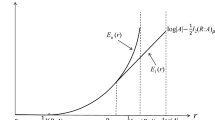Abstract. After carrying out a protocol for quantum key agreement over a noisy quantum channel, the parties Alice and Bob must process the raw key in order to end up with identical keys about which the adversary has virtually no information. In principle, both classical and quantum protocols can be used for this processing. It is a natural question which type of protocol is more powerful. We show that the limits of tolerable noise are identical for classical and quantum protocols in many cases. More specifically, we prove that a quantum state between two parties is entangled if and only if the classical random variables resulting from optimal measurements provide some mutual classical information between the parties. In addition, we present evidence which strongly suggests that the potentials of classical and of quantum protocols are equal in every situation. An important consequence, in the purely classical regime, of such a correspondence would be the existence of a classical counterpart of so-called bound entanglement, namely ``bound information'' that cannot be used for generating a secret key by any protocol. This stands in contrast to what was previously believed.
Similar content being viewed by others
Author information
Authors and Affiliations
Rights and permissions
About this article
Cite this article
Gisin, ., Renner, . & Wolf, . Linking Classical and Quantum Key Agreement: Is There a Classical Analog to Bound Entanglement? . Algorithmica 34, 389–412 (2002). https://doi.org/10.1007/s00453-002-0972-7
Issue Date:
DOI: https://doi.org/10.1007/s00453-002-0972-7




